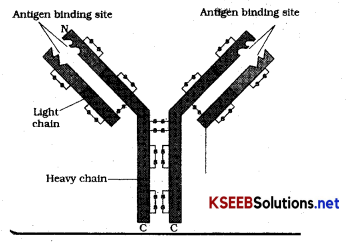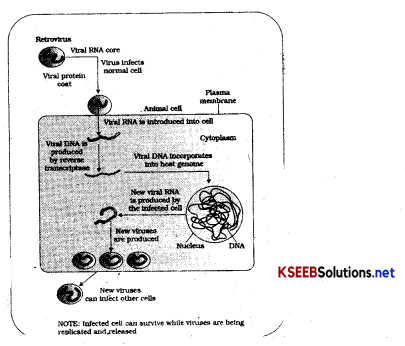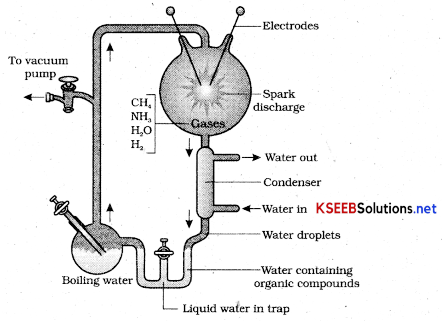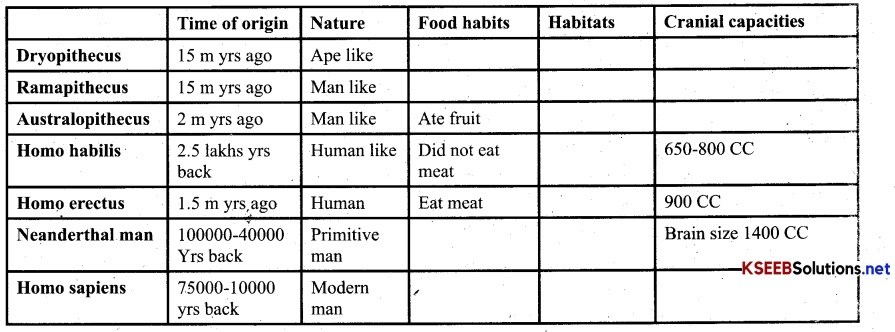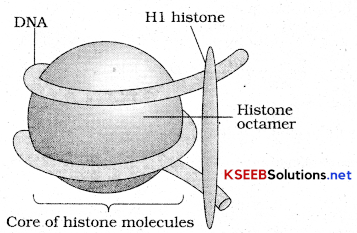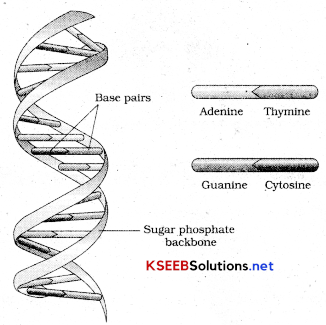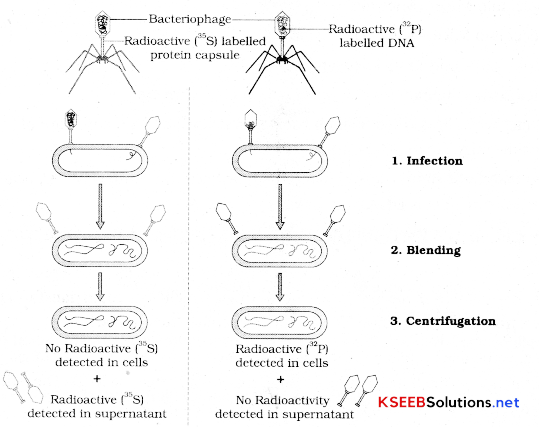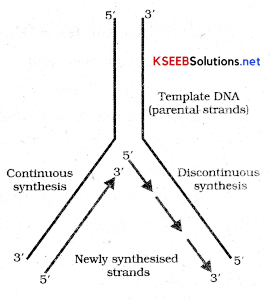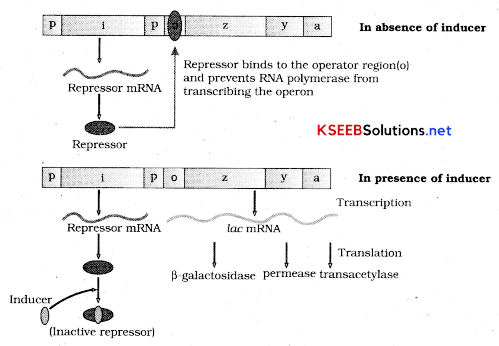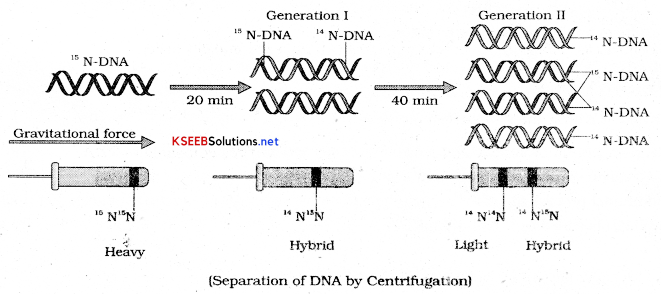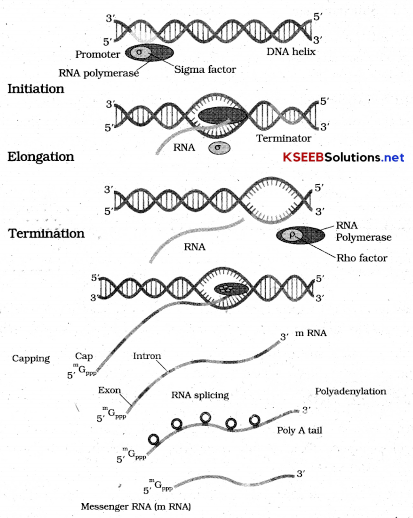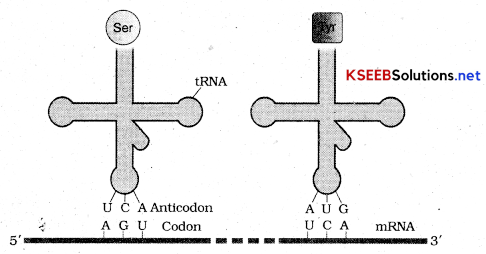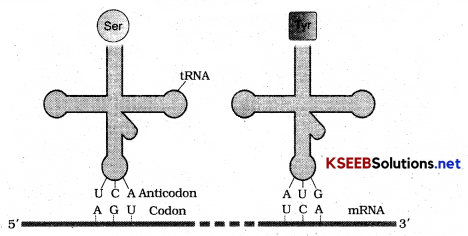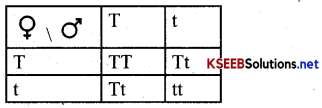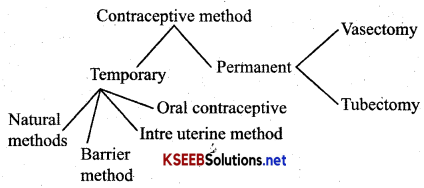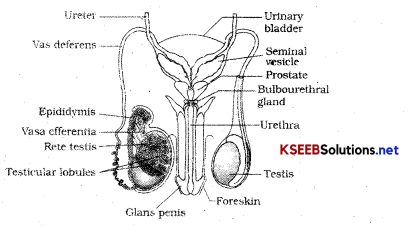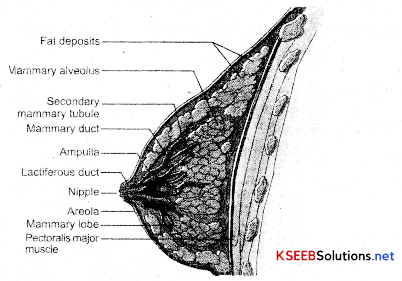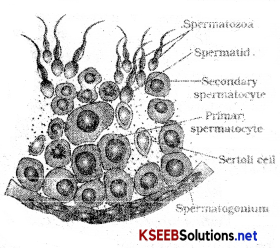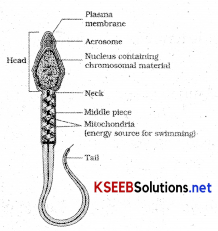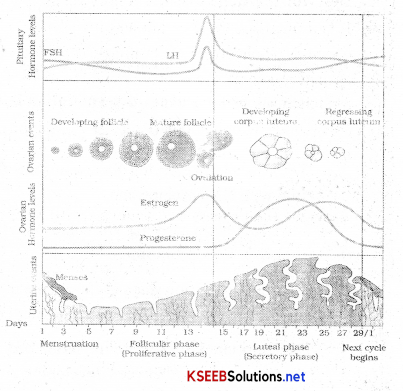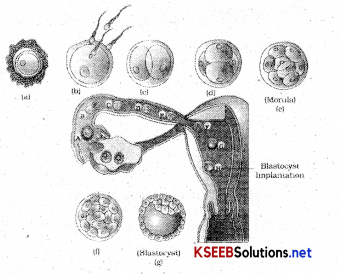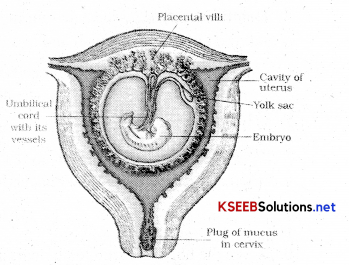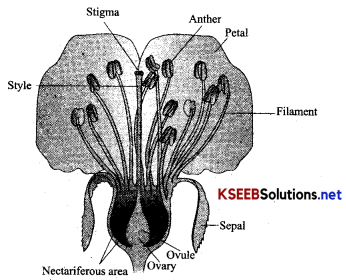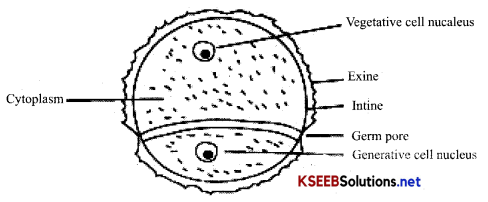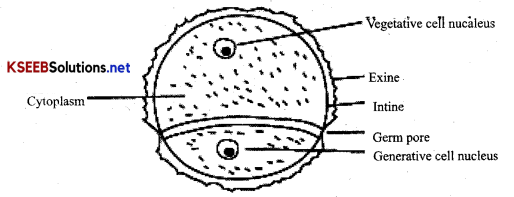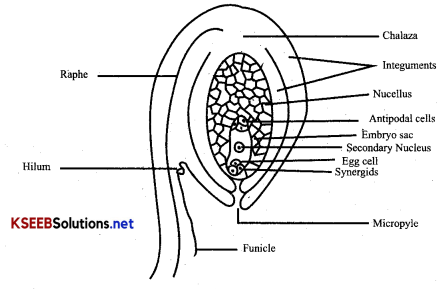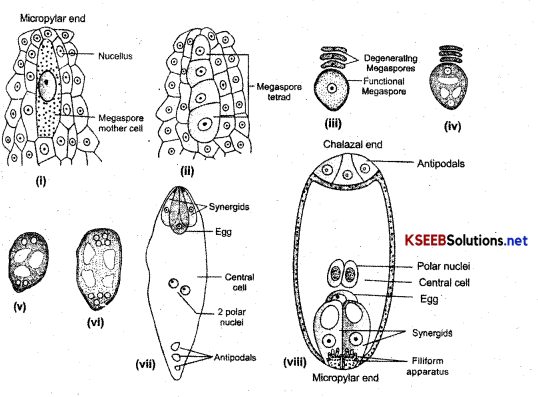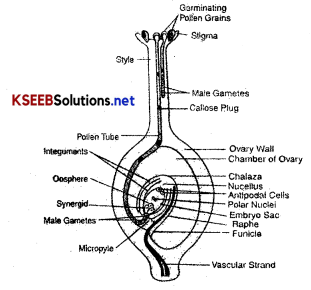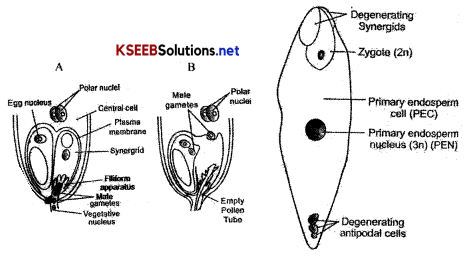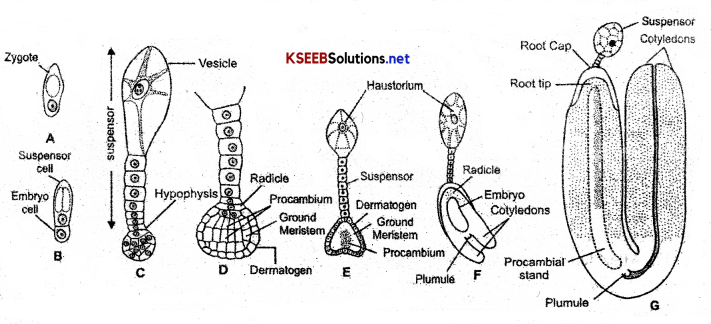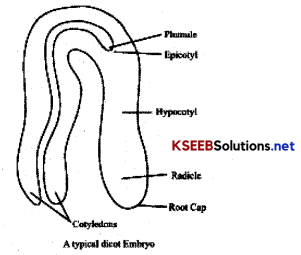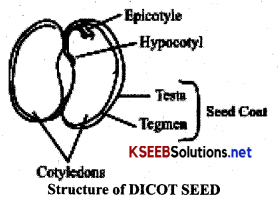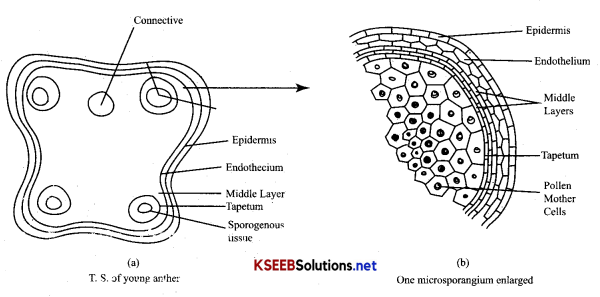Karnataka 2nd PUC Biology Important Questions Chapter 9 Strategies for Enhancement in Food Production
Question 1.
Define Animal husbandry?
Answer:
“It is the agricultural practice of breeding and raising live stock”. Includes Caring and breeding Buffaloes, cows, pigs etc.,
Poultry farming and fisheries Apiculture (bee keeping) for honey.
For food and eggs. Molluscs, prawns,crabs. India and china contributes about 70% of world live stock population.
Question 2.
Define dairying?
Answer:
Dairying is “the management of animals for milk and its products for human consumption.”
Question 3.
Explain the processes of dairy farm management?
Answer:
Processes of dairy farm management.
- Selection of good breeds having high yielding potential with disease-resistant characters.
- Cattles should be housed well, with adequate waters
- Providing correct quantity and quality of fodder.
- Maintaining hygienic conditions while milking and storage.
- Regular visits by a veterinary doctor.
Question 4.
Define Poultry?
Answer:
Poultry refers to “the class of domesticated fowl (birds) like chicken, ducks, turkeys and geese for their meat and eggs.
Question 5.
Write few sentences on successful poultry management?
Answer:
Management:
- Selection of disease-free and suitable breeds.
- Proper feed and water with hygienic conditions
- Healthcare.
![]()
Question 6.
Define the term Breed?
Answer:
Breed: A group of animals having the same ancestry characters appearance, size, configuration, etc.
Question 7.
Differentiate between Inbreeding and Outbreeding?
Answer:
Systems of breeding.
| Inbreeding | Outbreeding |
| 1. Mating of more closely related individuals. With in the same breed for 4-6 generations | 1. Mating of unrelated animals within the same breed but having no common ancestors upto 4-6 generations. |
| 2. Superior males and females of the same breed are identified and mated in pairs | |
| 3. Progeny obtained are evaluated selected used for further mating. |
Question 8.
Significance of Inbreeding?
Answer:
- Inbreeding is homozygosity
- It exposes harmful recessive genes which can be eliminated by selection.
- Inbreeding helps in the accumulation of superior genes.
Question 9.
Differentiate between outbreeding and outcrossing.
Answer:
- Outcrossing – Mating between unrelated members of the same breed.
- Outbreeding – Superior males of one breed in mated with superior females of another breed.
Question 10.
Define artificial insemination?
Answer:
Artificial insemination: The semen is collected from the male that is chosen as a parent and injected into the reproductive tract of the selected female by the breeder.
(Semen can be frozen and can be used at a later date, and also can be transported in a frozen form to the place where the male is housed). A.I. helps us overcome several problems of normal matings.
Question 11.
Explain MOET?
Answer:
MOET – Multiple Ovulation Embryo transfer technology for herd improvement (cows)
(a) Induction of superovulation in donor cow.
Answer:
A cow is administered with hormones with FSH-like activity, which results in production of 6-8 eggs instead of one egg, which they normally yield per cycle. “Production of more eggs is called superovulation”.
(b) Artificial insemination.
Answer:
The superovulated cow is artificially inseminated with semen collected from superior quality (Elite bull)
(c) Transfer of Embryos.
Answer:
The fertilized eggs at the 8-32 cells stage are transferred to surrogate mother cow which is in the same reproductive stage as the donor.
The genetic mother of is available for another round of super ovulation. This technology has been used for production high milk-yielding breeds, O+, high-quality meat-yielding bulls (o), and also in sheep, rabbits, buffaloes etc.
Question 13.
Define Inbreeding depression?
Answer:
Continuous inbreeding reduces fertility and even productivity. This is called inbreeding depression.
![]()
Question 14.
How can Be Inbreeding depression be overcome?
Answer:
To solve this problem, selected animals of the breeding population should be mated with unrelated superior
animals of the same breed or restore fertility and yield.
Question 15.
Define Out Crossing?
Answer:
Out Crossing: Mating between unrelated members of the same breed”.
Question 16.
Define Crossbreeding?
Answer:
Crossbreeding: “Superior males of one breed are mated with superior females of another breed”.
Question 17.
Give an example for cross breeded variety?
Answer:
Hisardale – new breed of sheep developed in Punjab by crossing Bikaneri eves and Marinorams.
Question 18.
Define Interspecific hybridisation with examples?
Answer:
“Male and female animals of two different related species are mated” Progeny may combine desirable features of both the parents.
Ex: MULE-cross between 2 different species, the female horse and the male donkey, which is stronger, disease, resistant, hard working.
![]()
Question 19.
Define apiculture?
Answer:
Apiculture – is maintenance of hives of honeybees for the production of honey.
Question 20.
Write Significance of apiculture?
Answer:
Significance:
- Honey is a food of high nutritive value used in medicine .
- Honey bees produces beeswax which is used in preparation of cosmetics and polishes of various kinds.
Question 21.
Write a note on management for successful Bee Keeping?
Answer:
Practice: Bee Keeping can be practiced in the area where sufficient bee pastures of shrubs, fruit orchards and cultivated crops,are present Many species of bees, the most commons are Apis indica.
The following points are important for successful bee-keeping.
(a) Knowledge of the nature and habits of bees.
(b) Suitable location, selection.
(c) Catching and hiving of swarms (group of bees).
(d) Management during different seasons.
(e) Handling and collection of honey and bees wax.
Question 22.
Define fishery? Give any 2 examples of fresh water and marine water fishes.
Answer:
Fishery is an industry devoted to the rearing, breeding, catching of fishes, shell fish, prawns, crabs, oysters, lobsters etc scientifically by man in ponds, tanks, etc, for Food.
Ex: Freshwater fishes: Catla, Rohu, Common Carp. Marine fishes: H-ilsa, Sardines, Maekeedl and Pomfrets.
Question 23.
Define Aquaculture?
Answer:
Aquaculture: Culturing economically important aquatic organisms. Harvesting, Processing, marketing in fresh, brackish and marine water.
Fisheries have an important place in the Indian Economy.
- Provides income and employment to millions of fishermen and farmers in coastal states.
- It is the only source of their livelihood.
Question 24.
Define Blue Revolution?
Answer:
Modem techniques in pisciculture and aquaculture have been able to increase production which is termed as ‘Blue Revolution’.
![]()
Question 25.
Define Green revolution?
Answer:
Green Revolution: Revolution in the breeding techniques in different crop plants for the development of high yielding and disease resistant, drought-resistant varieties.
Question 26.
Define Plant breeding?
Answer:
Plant breeding: It is the purposeful manipulation of plant species in order to create desired plant types that are better suited for cultivation.
Question 27.
Describe the steps involved in plant breeding?
Answer:
Following steps are involved in breeding a new genetic variety of a crop.
1. Collection of Variability: In many crops pre-existing genetic variability is available from wild varieties, where
these variations are inheritable. “The entire collection of plants and seeds having all the diverse alleles for all genes in a given crop is called germplasm collection.
2. Evaluation and selection of parents: The germplasm is evaluated to identify plants with a desirable combination of characters. Selected plants are multiplied, and pure lines are created where ever desirable and possible.
3. Cross hybridization among the selected parents: Desired characters are combined from two different plants
Eg: the high protein quality of one parent combined with disease-resistant variety from another parent. But it is time-consuming, and only one in 100/1000 shows the desirable combination.
4. Selection and testing of superior recombinants: Progeny among hybrids are selected which have the desired
character combination. These plants then self-pollinated of 6-8 generations, till they reach the state of homozygosity.
5. Testing, release and commercialization of new cultivars: The newly selected lines are tested for their yield and other characters, which is done in research fields by recording their performance under ideal crop management practices. The material is evaluated in comparison to the best available local crop cultivar which is a reference cultivar.
Note: Agriculture accounts for 33% of India’s GDP and employs nearly 62% of the population.
Examples of some Indian hybrids crops of high-yielding varieties.
Question 28.
Briefly explain on high yielding crops of India?
Answer:
Wheat and Rice: Wheat – wheat production increased from 11 to 75 million tonnes. Nobel Laureate Norman E. Borlang at “International centre for Wheat and Maize Improvement in Mexico” developed Semi-dwarf wheat.
Question 29.
Name two high-yielding wheat varieties?
Answer:
Sonka, Kalyan sona – high yielding and disease-resistant varieties.
Question 30.
Give 2 examples of Rice vairities?
Answer:
Rice: IR-8 (IRRI) Philippines. (International Rice Research Institute) Taichung Native -1 (Taiwan). These are semi-dwarf rice varieties. Later better yielding semi dwarf varieties Jaya and Ratna were developed in India.
![]()
Question 31.
Mention 2 sugarcane varieties used for breeding programme?
Answer:
Sugarcane:
- Saccharum barberi – North India – Poor sugar content and yield.
- Saccharum officinarum – South India – Thicker stems and higher sugar content.
(These 1 × 2 species ever successfully crossed, to get sugarcane varieties that have ability to grow in north India). Millets: Hybrid maize, jowar, and bajra have been successfully developed in India, high yielding, resistant to water stress.
Question 32.
Name fungal bacteria and viral diseases of plants?
Answer:
- Fungal diseases are Rusts → brown rust of wheat, red rot of sugarcane, late blight of potato.
- Bacterial diseases → black rot of crucifers, citrus canker.
- Viral disease → Tobacco mosaic and Turnip mosaic etc.
Question 33.
Explain the methods of plant breeding for disease resistance with examples.
Answer:
Methods of breeding for disease resistance:
The conventional method of breeding for disease resistance is – hybridization and selection
- Screening germplasm for resistance.
- Hybridization of selected parents.
- Selection and evaluation of the hybrids.
- Testing and release of new varieties.
Examples of disease-resistant varieties.
Question 34.
Give any two examples of disease-resistant variety?
Answer:

Question 35.
What is mutation breeding? Give example.
Answer:
Mutation breeding: “Improvement of crops by changing the genotype of plants through induced mutations “ (It is possible to induce mutations through use of chemicals or radiations (V radiations), the selection is made which plant have desirable Character, which sever as a source.)
Ex: Resistance to the yellow mosaic virus in bhendi (Abelmoschus esculentus) was transferred from a wild species, resulting in a new variety of bhendi known as “Parbhani Kranti.”
Note: Transfer of resistance gene is achieved by sexual hybridization between the target and the source plant followed by selection.
Question 36.
Explain how crop plants have evolved with natural resistant to insect pests along with examples?
Answer:
- Cotton resistance to Jassids
- Wheat resistance to cereal leaf beetle. In wheat solid stems, lead to non-preferences by stem sawfly.
- Smooth leaved and nectar-less cotton varieties keep away Bollworm.
- High aspartic acid, low N2 content, sugar content keep away maize stem borers.
Question 37.
Write a note on hidden hunger?
Answer:
Diet lacking essential micronutrients, Vitamins proteins leads to deficiency symptoms in man, i.e. ‘Hidden
hunger’, because of poor economic conditions, Plant breeding techniques have been used to improve nutrition quality of crops, vegetable, fruits etc.
Question 38.
Define Biofortification. Mention few examples of biofortified crops?
Answer:
Biofortification: “Breeding crops with higher levels of vitamins and minerals or higher protein and health; fats” The most practical means to improve public health.
![]()
Question 39.
Give few examples of vegetable crops released by IARI?
Answer:
- Vitamin A enriched Carrots, Spinach, Pumpkin
- Vitamin C enriched bitter gourd, mustard, tomato
- Calcium enriched spinach
- Protein-enriched -Beam, Peas etc.
Question 40.
Define SCP /Expand SCP?
Answer:
“Unicellular micro organisms, dried and uses as protein supplement in human food” They are alternate source of proteins for animal and plant nutrition.
Question 41.
Name few microbes usfed as SCP?
Answer:
- Bacteria- Methylophilus (250g) methylotrophs – its high rate of biomass production and growth, produces 25 tonnes of protein. (Where 250 kg cow gives 200g protein)
- Cyanobacteria – Spirulina
- Yeast – Saccharomyces cerevisiae, Mushrooms.
- Algae – Chlorella etc.
Question 42.
Why mircrobes are preferred for SCP culture?
Answer:
These microbes can be grown easily on waste water from potato processing plants, molasses, sewage, to produce large quantities such utilisation reduces environmental pollution.
Question 13.
Give a brief account of Tissue culture?
Answer:
“A branch of biotechnology where cells, tissues or organs of the plant body are isolated and grown on nutrient medium under aseptic conditions”.
Question 44.
Define Explant?
Answer:
Explant- The plant tissue or organ excised and used for invitro culture.
Question 45.
Define Totipotency?
Answer:
Totipotency – Capacity/ability of any cell to produce the entire plant of its own type in invitro culture.
(Nutrient) Medium – has sucrose as carbon source, vitamins amino acids and growth regulators like Auxin, Cytokinin etc.
Question 46.
What is Micropropagation?
Answer:
Micropropagation – Method of producing thousands of plants through tissue culture.
Question 47.
What are Somaclones?
Answer:
Somaclones Each of the plant resulted fram tissue culture is genetically identical to the original plant from which it is derived.
Question 48.
What is Meristem culture? Why they are prepared in tissue culture. .
Answer:
Meristem Culture – Culture of shoot apical meristems, produces large number of virus free microshoots.
Question 49.
What is Protoplast culture?
Answer:
Protoplast culture – The plants cells are digested with lytic enzymes like cellulase and pectinases and protoplast is obtained, which are cultured to get callus or microshoots. If protoplasts of same family are fused to hybrid protoplast which form new plant – Somatic hybrids, and process is known as Somatic hybridisation.
![]()
Question 50.
Write a note on applications of tissue culture?
Answer:
Applications of Tissue culture:
- Micropropagation
- Production of haploids (anther culture)
- Virus-free plants
- Production of secondary metabolites
Ex: Rauwolfia, serpentine etc.
→ Strategies for Enhancement in Food Production:
Enhancement of food production is a major necessity to meet the demand for food of the ever-increasing population of the world.
Animal husbandry and plant breeding are the two important biological principles practiced to enhance food production.
→ Animal Breeding:
Animal breeding aims at increasing the yield of animals and increases desirable qualities of the breed.
→ Plant Breeding For Disease Resistance:
Cultivation of disease-resistant varieties enhances food production, which helps to reduce the dependence on use of fungicides and bacteriocides. Before breeding is undertaken, importance is given to know about the causative organisms and the mode of transmission.
→ Other Breeding Methods:
- Somaclonal variation: (Genetic variability which is regenerated during tissue culture)
- Genetic Engineering: Breeding organisms with manipulated genes.
→ Plant Breeding For Developing Resistance to Insect pests
Hairy leaves in several plants are associated with resistance to insect pests.
→ Objectives of Improving:
- Protein, Oil, Vitamin content, and quality.
- Micronutrient and mineral content.
Examples of biofortified crops.
- Maize-amino acid, lysine, and tryptophan-rich.
- Wheat-variety Atlas 66-high protein content, which is used as a donor of improving cultivated wheat.
- Rice-with Iron-fortified (strengthen)
Indian Agricultural Research Institute-New Delhi has released several vegetable crops i.e.

